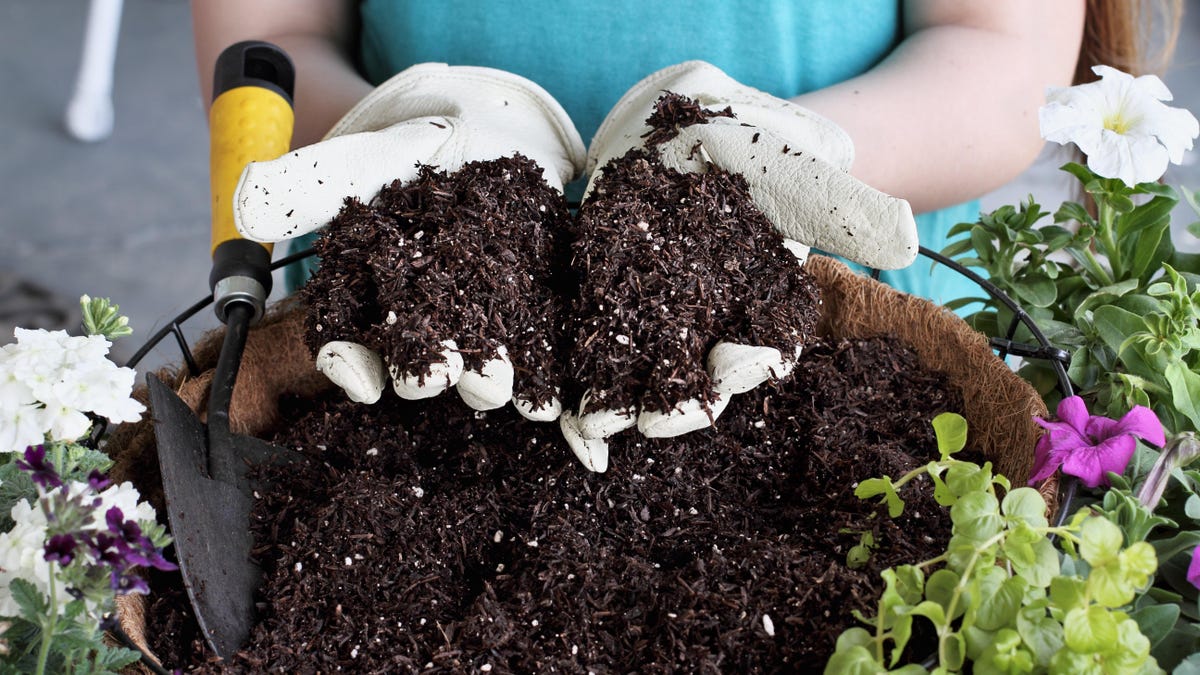Why You Don’t Need to Sterilize the Soil

Since the COVID-19 pandemic triggered the so-called ” global gardening boom “, there has been renewed interest in various methods and strategies to improve growing conditions for both indoor plants and outdoor gardens.
One example of this is the “sterilization” of soil. It makes sense that this preparation method became popular as people spent more time at home than usual and there was a general concern about sanitation and sterilization, but is it really necessary? Here’s what you need to know.
What is the purpose of soil sterilization?
The idea behind soil sterilization is to eliminate any soil-borne pests, diseases, and weeds that it may contain, in order to give anything planted in that soil , in particular seedlings , the best chance of survival and prosperity.
According to horticultural experts at PennState Extension , seeds need “adequate moisture and optimum temperature” to germinate. Unfortunately, it also creates ideal conditions for the spread of soil-borne diseases, including a common fungal infection known as “damping off”, which can kill or weaken seedlings.
Soil sterilization is also often recommended for planting or transplanting plants of any age, as this process can leave them vulnerable to certain pests, pathogens, or weeds living in the soil.
What is “sterile soil”?
There are a few things we need to clear up. First, most of the new, ready-to-use soil and soilless soil mixes available in stores have already been treated with heat, chemicals, or steam and are considered reasonably sterile. If you are using new soil straight out of the bag, there is no need to sterilize it a second time.
When gardening experts recommend soil sterilization, they usually mean reusing old soil from your garden, potted plants, or other sources after treating it at home with one of the methods below.
But no matter how and where the soil has been sterilized, it doesn’t stay that way for long : unless you’re working in a completely sterile lab, as soon as the soil comes into contact with your hands, tools, or pot, it becomes contaminated.
That’s why Robin Sweetser, professional gardener and longtime author of The Old Farmer’s Almanac and The All-Season Gardening Guide , suggests thinking of soil as “pasteurized” rather than “sterilized.”
How to sterilize the soil?
Home soil sterilization articles generally recommend one or more of the following methods:
- Baking in the oven
- Heating it up in the microwave
- Steam cooking in a pressure cooker
- Hydrogen peroxide treatment
- Cover it with plastic and leave it in the sun.
- Mixing in boiling water
- Adding a solution of water and formaldehyde
As you can imagine, some of these methods are more expensive, time consuming, and time consuming than others. There are other factors to consider, such as the awful smell that fills your home when you bake soil in the oven, and which method is best for the amount of soil you want to sterilize.
Can do-it-yourself sterilization harm the soil?
There are risks associated with soil digestion, Sweetser says , including plant damage known as ” phytotoxicity ,” which can inhibit germination and kill young seedlings. She also points out that “soil is a living thing full of beneficial microorganisms” and home sterilization methods tend to get rid of the beneficial parts of the soil along with those that can be harmful to plants.
Also, if there is not enough moisture in the soil when you start the sterilization process, it can lead to chemical changes that make it water-repellent and therefore unable to support plant life.
It is also important to know that not all soil can be heat treated. For example, if you’re working with soil that contains perlite (those little white balls), heating it can produce toxic levels of fluoride.
Is soil sterilization really necessary?
In the end, Sweetser comes to the conclusion that sterilizing used potting soil at home is not worth it, especially if the newly purchased potting soil does not require such treatment. She also notes that sufficiently sterilized soil is really only needed for planting seeds. For everything else, Sweetser reuses the old soil mix if the plants it once grew in were healthy.